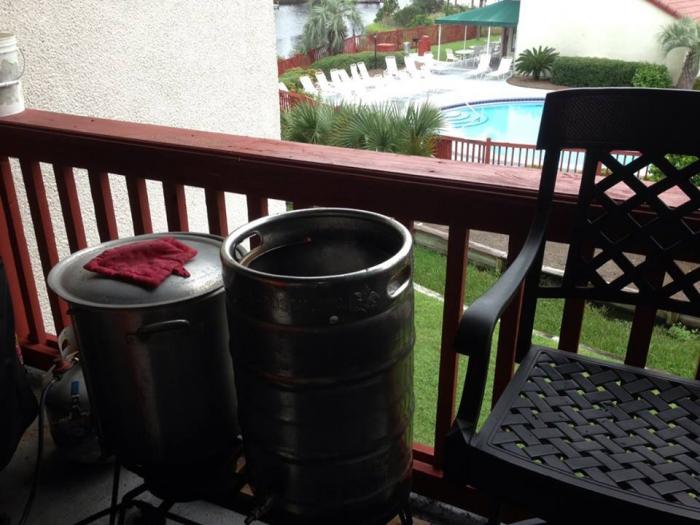Although I'm only two days into fermenting my first batch, I'm already looking forward to the future. After spending over $100 on an extract kit (imported extract is crazy expensive in China), and finding Aussie two-row for about $1.25/kilo, I'm planning on going all-grain soon. Since I'm brewing in an apartment with limited space, I'm hoping I can do single-vessel BIAB. That much said, I'm curious about a couple different options:
From a perspective of learning and equipment setup, cooking on gas would be the easiest move. I would have to buy a burner since the hood over my stove would be restrictive to lifting the grain bag, but I could brew in my current ~8 gal kettle with no new equipment beyond a grain bag and a standalone burner.
However, I'm also considering electric. That way I could avoid using an unvented burner in my apartment or brewing on the balcony, and I imagine it would be manageable with less equipment to clutter up the apartment when I'm not brewing. The major downside is that I don't yet know much, if anything, about electric brewing yet. I gather that I would basically need to get a heating element like those in electric water kettles, and use it in the bottom of my brew kettle as the heating element. Is that the basic idea of EBIAB or is there more to it from an equipment perspective?
Clearly, I'm only in most basic stage of learning and considering so far, but I'd love to get some insight so that I can start preparing for a BIAB in the near future.
From a perspective of learning and equipment setup, cooking on gas would be the easiest move. I would have to buy a burner since the hood over my stove would be restrictive to lifting the grain bag, but I could brew in my current ~8 gal kettle with no new equipment beyond a grain bag and a standalone burner.
However, I'm also considering electric. That way I could avoid using an unvented burner in my apartment or brewing on the balcony, and I imagine it would be manageable with less equipment to clutter up the apartment when I'm not brewing. The major downside is that I don't yet know much, if anything, about electric brewing yet. I gather that I would basically need to get a heating element like those in electric water kettles, and use it in the bottom of my brew kettle as the heating element. Is that the basic idea of EBIAB or is there more to it from an equipment perspective?
Clearly, I'm only in most basic stage of learning and considering so far, but I'd love to get some insight so that I can start preparing for a BIAB in the near future.

























































![Craft A Brew - Safale BE-256 Yeast - Fermentis - Belgian Ale Dry Yeast - For Belgian & Strong Ales - Ingredients for Home Brewing - Beer Making Supplies - [3 Pack]](https://m.media-amazon.com/images/I/51bcKEwQmWL._SL500_.jpg)
